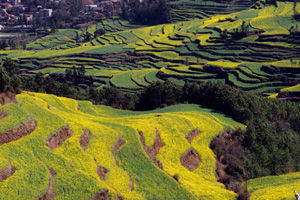LHASA -- Chinese scientists said on Monday that they have sequenced the entire genome of highland barley, an achievement that can help cultivate better breeds of Tibet's staple food and increase yield.
The genome mapping project, which the scientists said has produced the world's first genetic map of highland barley, was launched in 2012 by researchers with Tibet's Academy of Agricultural and Animal Husbandry Sciences and BGI Tech Solutions in Shenzhen.
"We have completed a draft sequence of an old barley variety native to the Tibet plateau," said Nyima Tashi, deputy dean of the Lhasa-based academy.
The study assembled 3.89 billion of the estimated total of 4.5 billion base pairs of the chemicals that make up DNA in the highland barley genome, and included 39,197 protein coding genes, said Nyima Tashi, who was also the chief scientist in the two-year research project.
A genome is the full complement of an organism's DNA, complex molecules that direct the formation and function of all living organisms. The size of an organism's genome is measured by the number of bases it contains -- base pairs being the building blocks of DNA.
The wheat genome, for example, has about 17 billion base pairs and soybeans have about 1.1 billion.
Nyima Tashi said the team hoped having a map of all the genes in highland barley would enable breeders to cultivate better varieties of the cereal crop and increase yield.
Highland barley, known in Tibetan as "ne," has been grown on the Qinghai-Tibet Plateau for nearly 4,000 years.
It makes up 70 percent of all cereal crops in southwest China's Tibet Autonomous Region, home to the world's leading barley production base as well as a center for barley diversity research.
The barley is used to make tsamba, beer, flour, cakes and noodles.


Farmers look to more land reform Rural colors blooming in spring